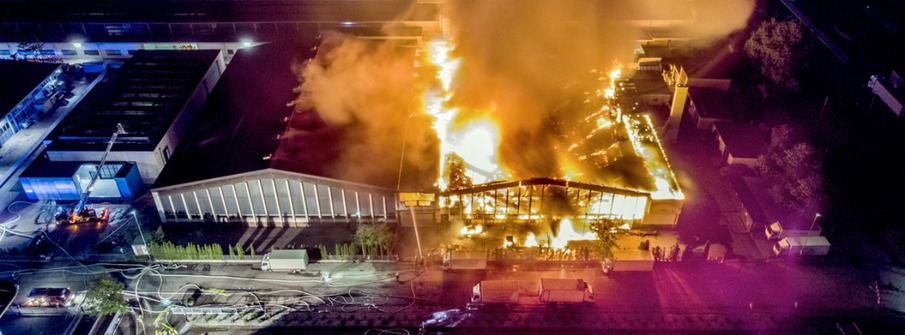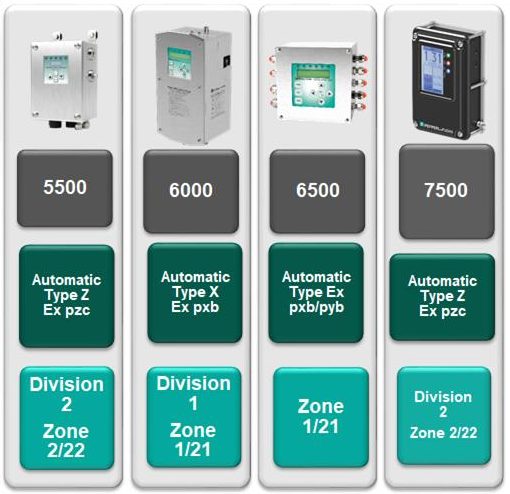Prevent Dust Explosions at your Plant
One minor dust explosion at a plant can turn into a fire that consumes the entire plant in a matter of minutes. At Carotek, we can offer solutions with products that can prevent dust explosions. This article from Pepperl+Fuchs details one solution option – pressurization – to help your plant implement mitigation products and processes for dust explosion prevention.
Disasters like the one at the Imperial Sugar Company refinery in Georgia, USA, resulted in several congressional hearings in the USA that cited the US Occupational Health and Safety Administration (OSHA) for not enforcing worker protection regulations. As a result, OSHA has since identified at least 30,000 plants in the USA as having potential problems from dust hazards. It is also estimated that around 2,200 dust explosions happen throughout Europe each year. As the industry continues to become aware of this potentially devastating problem, Pepperl+Fuchs is developing products that protect workers, plants, and the surrounding environments. In this article, we explain where combustible dust atmospheres may occur and how these could be prevented.

Combustible Dust Atmospheres in Plants
In February 2008, an explosion at the Imperial Sugar Company refinery in Port Wentworth, Georgia, USA, resulted in 13 deaths and 42 injuries and destroyed most of the plant. While the investigation into the explosion showed that there was only a small explosion within the plant, it was determined that the shock and small fire that proceeded it had suspended sugar dust into the air. The dust then caught on fire and spread throughout the plant.
Five years earlier in North Carolina, USA, a plant that produced rubber stoppers and plastic pill casings for the pharmaceutical industry had suffered a similar catastrophe. The plastic dust created from making the pill casings had collected on the machines and I-beams of the facility. During routine work, the machines released the dust into the air, where it caught fire and exploded. The plastic that ignited was not listed as an explosive material because only the pill casing as a whole had been evaluated. But once that pill casing had been ground into a fine powder, it became explosive.
Preventing Dust Explosions
One of the best methods for preventing dust-related explosions is to thoroughly clean work environments of combustible dust to ensure plant and worker safety. However, the equipment operating within the plant's enclosures must also be protected. This starts with preventing combustible dust from entering the enclosures during operation. This can be achieved using pressurization.
Pressurization utilizes compressed air or inert gas to protect equipment within an enclosure. The pressurization control system will regulate and monitor a positive pressure within the enclosure to prevent the dust from entering the enclosure. By separating the ignition source from the combustible dust atmosphere, the hazard can be minimized.
Dust Explosion Solution: Pressurization
The first thing to consider when planning to apply the pressurization method is that the requirements for potentially explosive dust atmospheres are different than those for potentially explosive gas atmospheres:
- Purging is not required for dust areas and is to be avoided. Any dust accumulation inside the enclosure cannot properly exit the enclosure through the vent based on air stirring currents, like a gas or vapor can, due to a number of factors including a vent that may have a spark-arresting screen. The end user will need to use appropriate measures to clean out any dust from inside the enclosure including the equipment in the enclosure that is being protected, close it up, and then pressurize it to keep any dust from entering prior to energizing the equipment within the pressurized enclosure.
- The pressure required to keep the dust out is higher than it is for gas depending on the standard that is being followed and the dust particle size.
- The pressurization control system used must be certified for dust applications. A pressurization control system certified for only gas cannot be used in a combustible dust environment.
For additional information on this method of protection, reference the standard NFPA 496 for Class/Division applications. For Zone-based applications, reference the standard IEC 60079-2 or the appropriate national deviation of this standard. Also consult any local laws that regulate this protection concept and the installation of equipment protected by pressurization.
Pressurization Control Systems for Dust Explosion Prevention
Pepperl+Fuchs brings more simplicity to your operating floor with a full range of pressurization products that meet the requirements for protecting against hazardous dust. The technology in our systems not only provides purge and pressurization, it also continuously monitors the conditions in the enclosure, makes automatic adjustments, and provides output alarms for reliable protection.
The table below shows our newest pressurization control products designed for use in applications with hazardous gas or dust:

All products are fully certified for Class/Divisions and Zones. For example, the 6000 Series Purge and Pressurization System can be used in either potentially explosive gas (Class I, Div. 1 or Zone 1) or explosive dust (Class II, Div. 1 or Zone 21) atmospheres, and has certifications that cover US, Canada, ATEX and IECEx as well as some other local certifications.
Learn more about Pepperl+Fuchs Explosion Prevention Products.
Want to take hazardous protection to a new level to prevent dust explosions? Contact Carotek to learn more about Pepperl+Fuchs pressurization solutions.
This article originally appeared at https://blog.pepperl-fuchs.us/how-to-prevent-dust-explosions-using-pressurization
